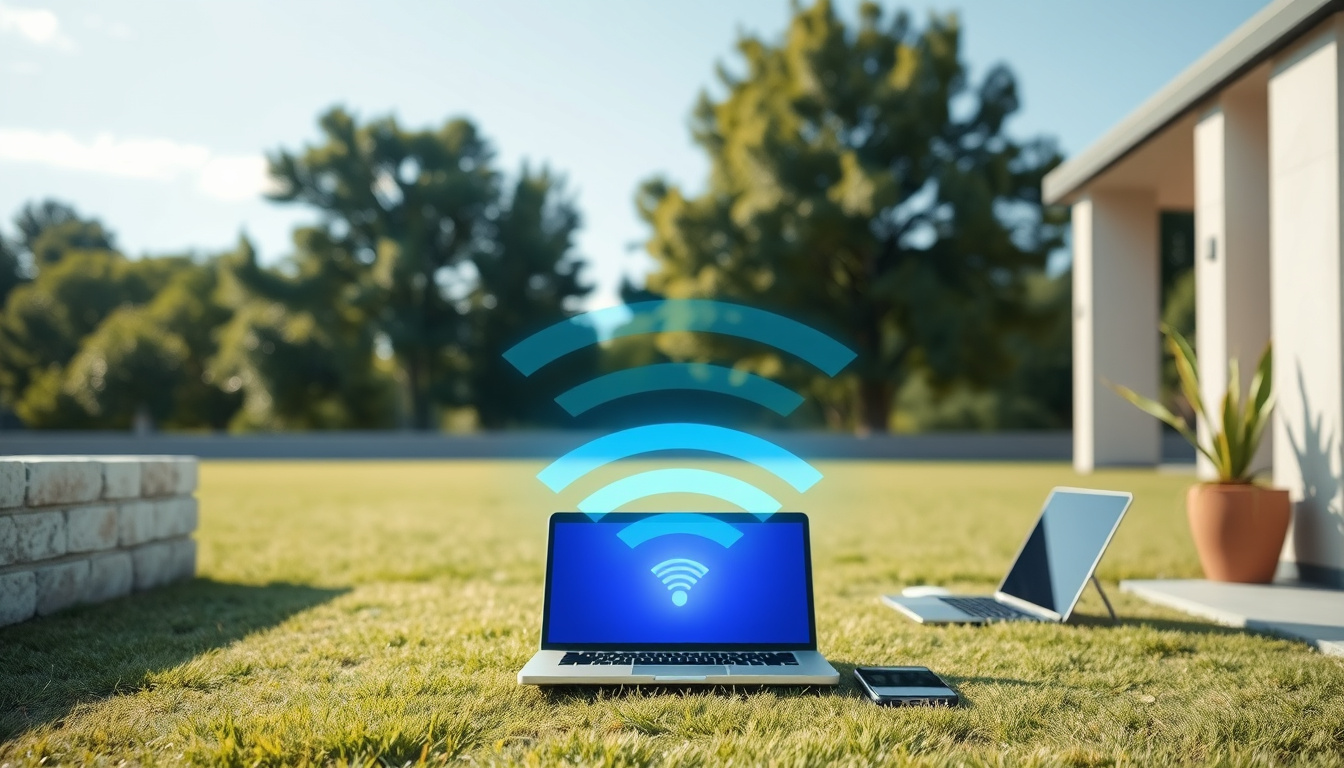In our increasingly connected world, the desire for seamless internet access extends beyond the confines of our homes. Whether you’re working from your backyard, enjoying a summer movie night by the pool, or gaming in the garage, a strong Wi-Fi signal is crucial. However, achieving reliable outdoor Wi-Fi can be challenging due to physical obstructions and interference. Here, we explore effective strategies to extend your Wi-Fi coverage outdoors, ensuring you stay connected anywhere on your property.

1. Optimize Router Placement
The location of your Wi-Fi router plays a pivotal role in signal strength. For outdoor connectivity, consider placing your router in a more strategic position. Here are some tips:
- Elevate: Position your router higher up, such as on a shelf or mounted to a wall, to reduce interference from obstacles.
- Central Positioning: Place the router near the center of your home to maximize coverage in every direction.
- Avoid Obstructions: Keep the router away from thick walls, large electronics, and appliances like microwaves that could block the signal.
2. Utilize Outdoor Wi-Fi Extenders
Outdoor Wi-Fi extenders are purpose-built devices that help expand your wireless network into outdoor areas. These weatherproof extenders receive signals from your main router and boost them over a larger area. Consider the following:
- Ethernet Connection: For the best performance, connect the extender to your main router via an Ethernet cable. This setup ensures a stronger, more stable connection compared to relying solely on Wi-Fi.
- Cost vs. Quality: While there are affordable options available, investing in a higher-quality extender can significantly improve coverage and speed. Brands like Netgear, Ubiquiti, and EnGenius offer reliable solutions.
3. Upgrade Your Equipment
If your current setup isn’t sufficient, consider upgrading your equipment:
- Router Technology: A modern router equipped with Wi-Fi 6 (802.11ax) technology provides faster speeds and better performance in densely populated network environments. This upgrade can offer remarkable improvements in outdoor coverage, especially if you have a smaller property.
- Mesh Networking Systems: Consider a mesh Wi-Fi system, which consists of multiple interconnected units that can cover larger areas without the dead zones common with traditional routers. This system is especially beneficial if you’re looking to eliminate weak spots both indoors and outdoors.
4. Optimize Router Settings
Sometimes, improving your outdoor Wi-Fi signal can be achieved through software adjustments:
- Update Firmware: Regularly check for and install firmware updates to ensure your router performs optimally. Many routers allow automatic updates for convenience.
- Adjust Signal Strength: Look for settings that control the router’s output power. Setting this to 100% can help extend the signal range beyond your property lines, although it may reduce security by allowing external devices to connect.
- Select the Appropriate Frequency Band: When connecting devices outdoors, try using the 2.4GHz band, which offers a longer range than 5GHz, albeit with slower speeds.
5. Minimize Interference
Wi-Fi networks can become congested, particularly in residential areas:
- Choose the Right Channel: Use your router’s admin interface to select a less crowded channel for your Wi-Fi network. This change could dramatically enhance your connection by avoiding interference from neighboring networks.
- Less Congested Time: If you experience slow speeds during peak usage times, consider scheduling outdoor activities during off-peak hours when fewer devices are connected to the local networks.
6. Additional Considerations
As you work on enhancing your outdoor Wi-Fi experience, remember these practical tips:
- Signal Strength Tests: Use online tools or apps to measure your Wi-Fi signal strength in various outdoor locations. This data can help you determine the most effective setup.
- Professional Installation: Depending on your property size and layout, it may be advantageous to consult with a professional who can recommend the best equipment and installation strategy.
Conclusion
Extending your Wi-Fi coverage outdoors doesn’t have to be an overwhelming challenge. By optimizing router placement, investing in the right equipment, and making strategic adjustments, you can enjoy a strong, reliable connection in your backyard, garage, or anywhere else outside your home. Embrace the freedom of connected living and make the most of your outdoor spaces!



